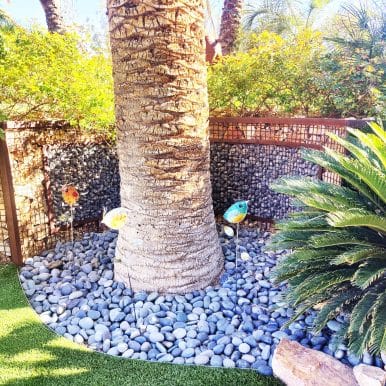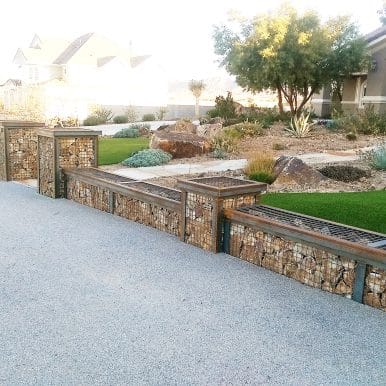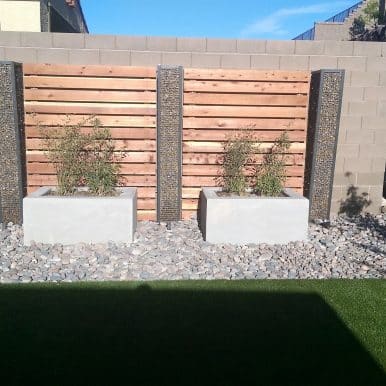Gabion Walls
Gabion Walls
The word “gabion” comes from the Italian word “gabbione” meaning “big cage.” A gabion wall is literally a big cage which is filled with rocks or other materials to form a solid structure. These can be used for both functional and decorative purposes.
Urban designers have been incorporating decorative gabion walls into public spaces for decades. However, in recent years, the trend has picked up speed. You’ll find them along freeways and offramps, around government buildings, and even as landscape décor in parking lots.
Gabion walls are not just for public spaces, though. They create a unique look for residential landscapes as well. There are infinite ways gabion walls can be incorporated into backyards and landscapes, but we have our favorites:
BBQ Islands
Decorative Columns
Countertop Bases
Outdoor Pony Walls
Decorative Bench Supports
Fire Pits
Decorative Landscape Backdrops
Retaining Walls
We love working with contractors to create unique designs for their unique landscape applications. Because we have a history of landscape installation in the Las Vegas valley, we have an eye for what will work and what will look great under any circumstance.
Even though we don’t perform the installation of gabion walls, we have a lot of experience fabricating metal gabion baskets for contractors to install. We work with all types of mesh and structural steel to achieve the appropriate styling for any project. We also have a lot of experience and trade knowledge to offer when it comes to installation. One of the most time-consuming and crucial elements of decorative gabion baskets lies in the placement of the rocks inside the cage. For aesthetic appeal, the rocks must be placed strategically along each face of the gabion basket. If this is not done well, the wall will not look good.
Gabion baskets have a long history – aside from the last century or so, most of that history has been functional in nature. You may wonder, as we did, how gabion walls originated. It turns out they were used anciently beginning with the Egyptians. They used them along the Nile to protect its banks from erosion. Because water can pass through a gabion wall, they are extremely effective for erosion control and have been used for that purpose around the world ever since. They are particularly useful in flood zones as water can pass through reducing pressure on the wall. They also make great retaining walls because of their excellent drainage and their strength. It is mostly a modern concept (within the last century) to use them for decorative purposes.
Whether functional or decorative, gabion walls lend a unique appeal and perfect function to any landscape.


